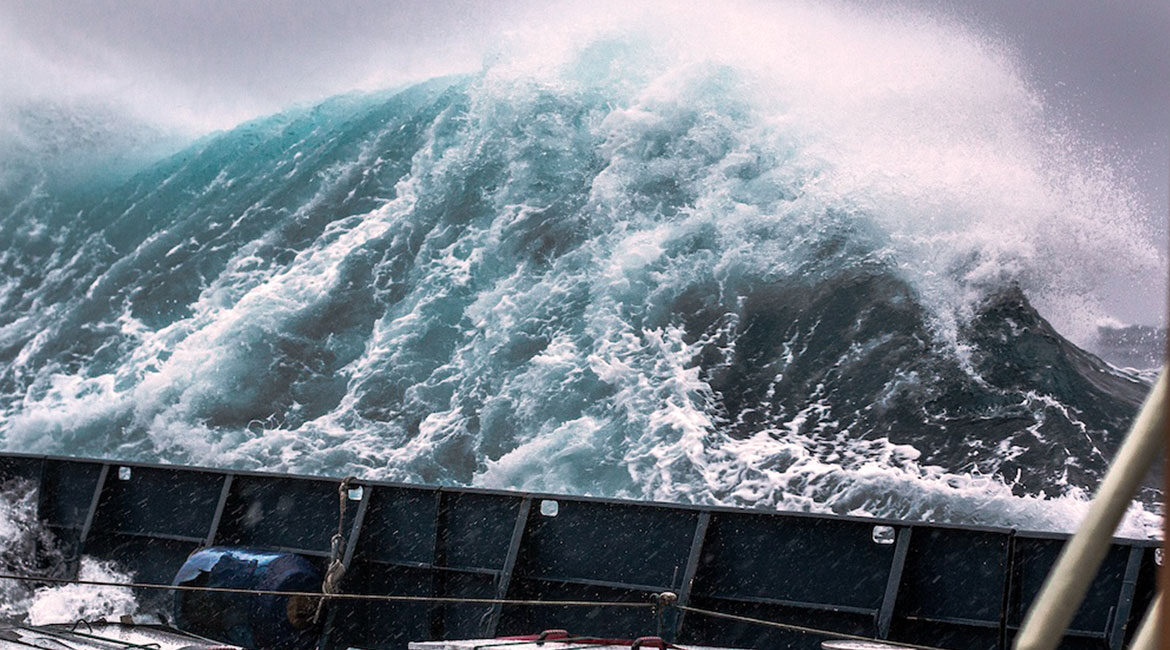November-December in the North Atlantic can be a brutal time of year to conduct scientific research, with winds reaching 50 knots and waves higher than 20 ft. Researchers aboard the R/V Atlantis answered the challenge to conduct science in these conditions as part of the North Atlantic Aerosol and Marine Ecosystems Study (NAAMES), a five year study investigating the biological, chemical and physical factors driving the population dynamics and succession of phytoplankton during seasonal transition periods and its linkages to atmospheric aerosols and cloud formation with implications for climate. Among them, graduate student Christien Laber, representing Dr. Kay Bidle, sampled for phytoplankton-virus dynamics and activity during the month long cruise. Their primary interest in this study is to characterize and quantify phytoplankton loss rates associated with viral infection—specifically, how viral dynamics influence the annual cycle of phytoplankton growth in the region, how environmental factors regulate viral infection and how viruses interface with aerosols and cloud formation. To answer these questions, Christien and Kay are utilizing a suite of tools ranging from genetic and molecular biomarkers of infection to laser based flow cytometric analysis and biooptical proxies. This was the first of the studies four campaigns, the next of which will be May 2016.
But what kind of conditions does it take to grind science to a halt? Even when the seas rise above the ships main deck and waves explode against the hull, seawater and airborne aerosols are sampled through the ships flow-through system and aerosol samplers. With special permission from the bridge, scientists are even allowed to venture onto the back deck while harnessed to a line to collect samples from the on-deck incubators. However, overboard sampling, which provides the main source of samples for many of the scientists, is put on standby until the sea state fairs.
NAAMES is funded by the NASA Earth Venture Suborbital Program and lead by Mike Behrenfeld of Oregon State University.

